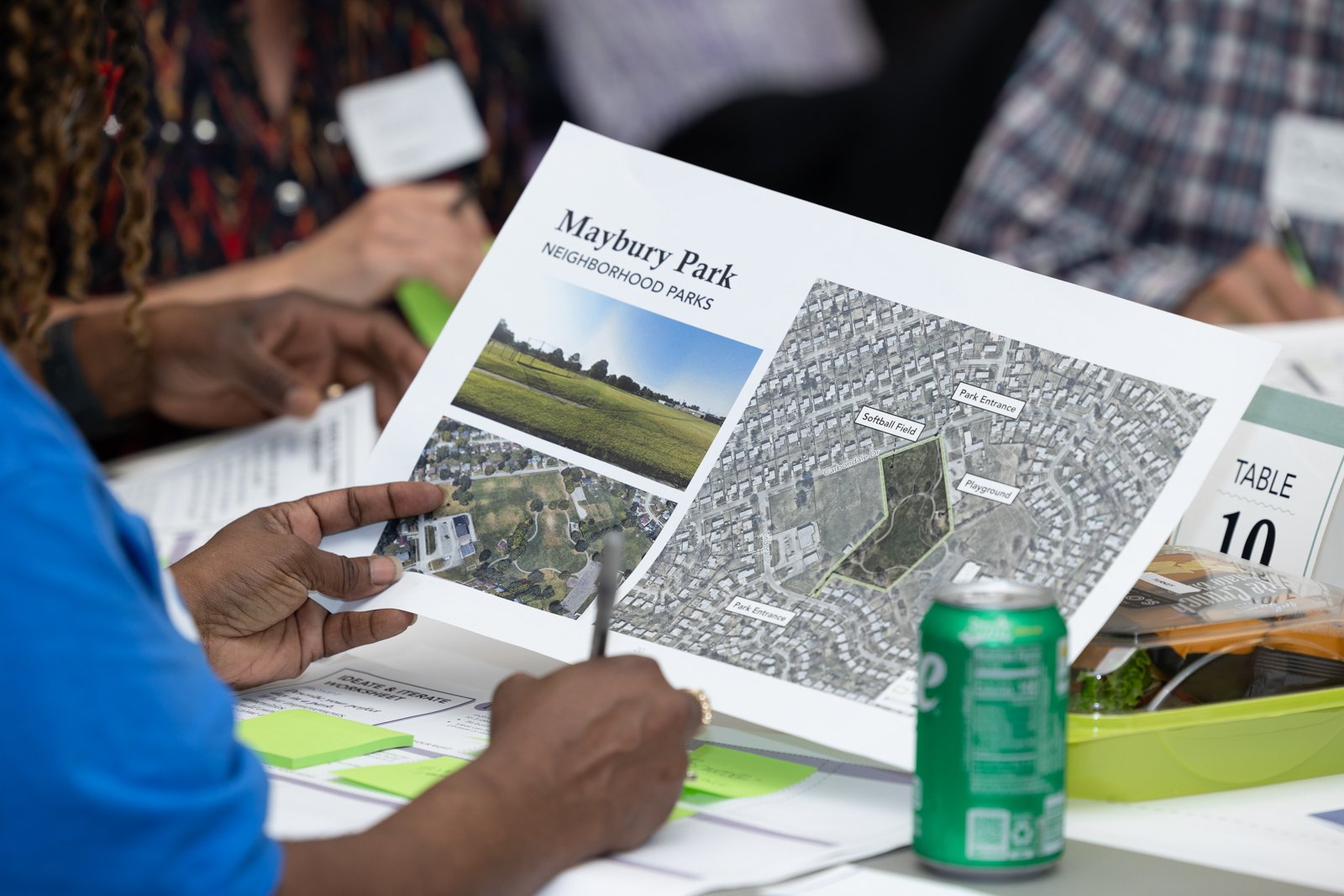
Eastland Community Plan Columbus, Ohio
Services Provided
Downtown Planning
Urban Design
Community Engagement
People Involved
Andrew Overbeck
Sarah Lilly
Aurora Albertone
Kristen Asiedu
Plan Document
Creating an inclusive and equitable new chapter for the Eastland area
Like many urban neighborhoods, Eastland is challenged by disinvestment, which can be felt across the community, but most notably through the closing of the Kroger grocery store and Eastland Mall. Beyond these visible and high-profile sites, the area is typified by aging industrial and logistics uses; highways, busy roadways, and rail lines that provide access but also create physical and psychological barriers. Despite these challenges, the area also has many of the building blocks in place to allow the area to grow and thrive.
Over the course of 16 months, the Eastland for Everyone Community Plan directly involved more than 1,800 neighbors in the creation of a vision for the future of Eastland. An inclusive engagement strategy underpinned this work to ensure this plan was reflective of the Eastland community. An advisory committee comprised of community stakeholders and change-makers led the way, providing guidance, insights, and feedback throughout the process. Outreach was extensive and intentional, focusing on understanding the lived experiences of a diverse set of community members. Focus group meetings, stakeholder conversations, pop-up events, office hours, mailers, and online and digital tools provided numerous ways for the community to engage in the planning process.
Three traditional Public Meetings were augmented by five Topic Workshops that brought community members together with City departments and partner organizations to co-create solutions and recommendations.
Eastland for Everyone combines community input with insightful analysis to create a framework to guide the revitalization and improvement of Eastland. The plan is organized around eight topics that were chosen by the community. For each topic there is a Big Idea that expresses a community-informed desired outcome. To achieve success, there are supporting Objectives and Action Items to provide direction and propose solutions. The plan also clearly illustrates what success can look like if the Action Items are realized. Fortunately, there are five Early Win projects that will start to improve Eastland in the short term. Additionally, the community identified 15 Catalytic Opportunities that will further transform and revitalize the Eastland area.


















